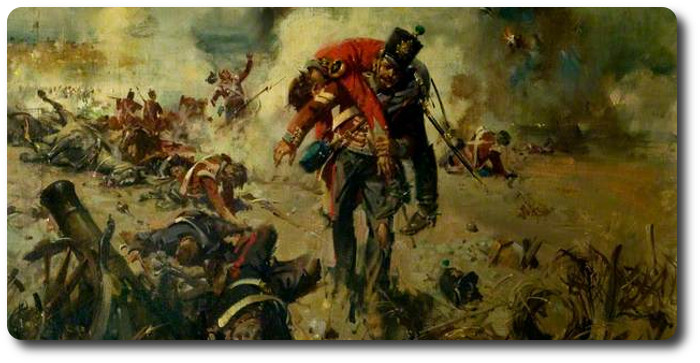Topic: British Army

Regimental Organization and Tactics (1855)
It is only "devils dressed in red and white" who go up—as the gallant light division of infantry at the Alma did—and, contrary to all the rules of strategy, take a battery of artillery in the face of an astonished foe.
From: Field Service; The Sydney Morning Herald, Sydney, Australia, 11 May 1855
(From the Household Words)
Popularly, a regiment is said to consist of a thousand men, but at present the actual strength of an infantry regiment is a battalion of thirteen hundred and thirty-seven men of all ranks. One third of this number, or four companies (each company being composed of a captain, two subalterns, five sergeants, five corporals, ninety-five privates), form the depôt or reserve at home; while the other eight, amounting to eight hundred and ninety-five men, are the service companies on duty abroad.
A regiment of cavalry numbers two hundred and seventy-one horses, or three hundred and sixty-one in the dragoons, and as many as seven hundred and three in the East Indies.
What is called a division of an army is a force of from five to ten thousand men, in command of a general, and made of of two or three brigades of three or four regiments each of infantry, two or three gun batteries of six pieces each, and a proportion of cavalry. In reckoning their number, it is customary to deduct ten per cent, sick or disabled; so that five regiments of say eight hundred each would represent three thousand six hundred fighting men actually in the field.
A division in line of battle is posted in two lines, one in rear of the other with cavalry behind, and a reserve of guns and one or two regiments behind these, to be kept fresh in case of need. Some idea of the extant of a line may be gathered from these numbers; a regiment of eight hundred stretches two hundred and fifty yards; a division of three brigades, seven hundred and thirty-five yards, allowing for spaces between; and a regiment of cavalry, four hundred yards. The guns are posted in front, or at the flanks, at each end of the line; the right flank and wing being at your right hand as you face the enemy, the left flank at your left hand. Generally, the artillery have the honour to begin the encounter, supported by the fire of infantry. When the former have done sufficient execution, the latter advance with the bayonet to complete the business; and when the enemy is disorganised, or in flight, cavalry follow up the blow and dart off in pursuit. Artillery are usually employed opposite artillery, cavalry against cavalry, and so on, according to circumstances. It is only "devils dressed in red and white" who go up—as the gallant light division of infantry at the Alma did—and, contrary to all the rules of strategy, take a battery of artillery in the face of an astonished foe.

